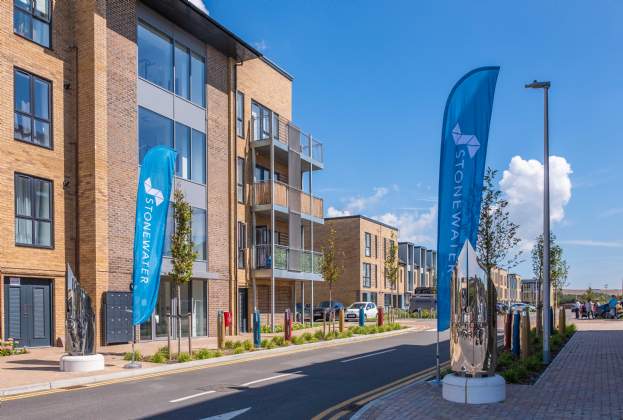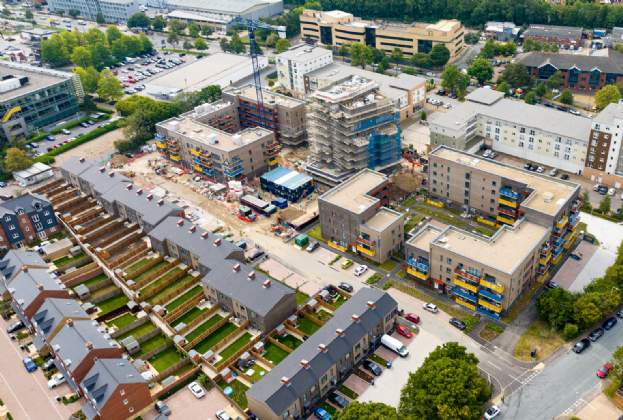The Government’s Social Housing Green Paper makes much of the eight strategic partnerships between housing associations and Homes England, which will deliver an extra 23,500 homes by 2022 – including 14,240 additional grant-funded affordable homes.
Following the recent letter from Homes England to potential future strategic partner housing associations, we know the minimum additional requirements for potential partner associations. But what else can Homes England and housing associations bring to the table?
Savills is supporting Homes England on the strategic partnerships initiative. Although currently strategic partnerships run to March 2022, as part of the conversation we asked housing associations to provide a 10-year view of what could be delivered with grant certainty.
The effect could be transformational. Too many housing association development programmes still rely heavily on homes bought through the Section 106 process, partly because grant has not been available at levels sufficient to support land-led delivery.
Although Section 106 is a useful means of supply, land-led programmes are key to supporting increased output. By controlling land, housing associations can provide more certainty for the supply chain and support capacity building in small and medium-sized enterprises. They can also stimulate increased use of modern methods of construction, as well as directly control design and construction quality.
With grant certainty to 2028, housing associations said they could:
- Plan for the long term and invest in skills and infrastructure for larger, land-led programmes.
- Increase the level of land-led development activity – with the associated greater costs and risks (than Section 106) – secure in the knowledge of grant availability and tenure flexibility.
- Commit to invest in buying sites that will take longer to build out, as well as short-term delivery opportunities including investing in land assembly, development options, and buying larger-scale sites.
The housing association strategic partners also suggest that the increased flexibility of the grant support to allow associations to alter the tenure mix will also increase the build out rate.This was a key point identified by Sir Oliver Letwin in his Independent Review of Build Out Rates, published in June.
So, while we absolutely agree that longer-term certainty is a key factor to boosting delivery, there is still disparity between the different timescales that affect development plans.
- Letwin’s report concludes that 'the median build out period for (large) sites… is 15.5 years'. A large site begun today will be not be fully completed until 2033;
- Rent certainty has only been promised to 2025;
- The new HE strategic partnerships run to March 2022;
- Local authorities are required to spend Right to Buy receipts within three years, or by 2021 for a sale today.
Wouldn’t it be great if these timetables could be aligned? For ambitious housing associations looking to increase supply, partnerships should ideally extend for at least 10 years, say to 2028. Rent certainty should extend beyond that to permit associations to raise funding. And local authorities should be able to deploy their Right to Buy receipts over the same period – the Green Paper helpfully proposes an extension of the timetable to give councils a chance to commit to development. If the government wants something for something it could offer these certainties only to those landlords prepared to enter into partnerships to deliver additional homes.
Research by Savills in November 2016 examining the financial capacity of England’s largest 175 housing associations concluded there was £7.4 billion of financial capacity that associations could access. With support from the government in the form of around £1.5 billion of land or subsidy, 44,000 additional homes could be built each year by 2029. That would take the total number of homes built by housing associations to 84,000 a year.
Our research concluded that the untapped capacity lies principally in medium-sized housing associations. The Green Paper notes the importance of the Affordable Housing Guarantee Scheme to the same smaller and medium-sized providers who are less well placed than the larger associations to access the capital markets in their own right.
For the smaller providers additional help may be necessary to help them access larger opportunities, but this requires them to collaborate to create effective multi-landlord partnerships.
The more proactive, pragmatic approach heralded by the Green Paper is welcome. The additional flexibilities offered, and already being developed in the strategic partnerships between Homes England, regional partners and housing associations, offer positive evidence that significant potential exists to further increase housing supply.
• This blog was first published on Inside Housing
Further information
Contact Savills Affordable Housing Consultancy
.jpg)


.jpg)
.jpg)



-large---midland-heart.jpg)

.jpg)